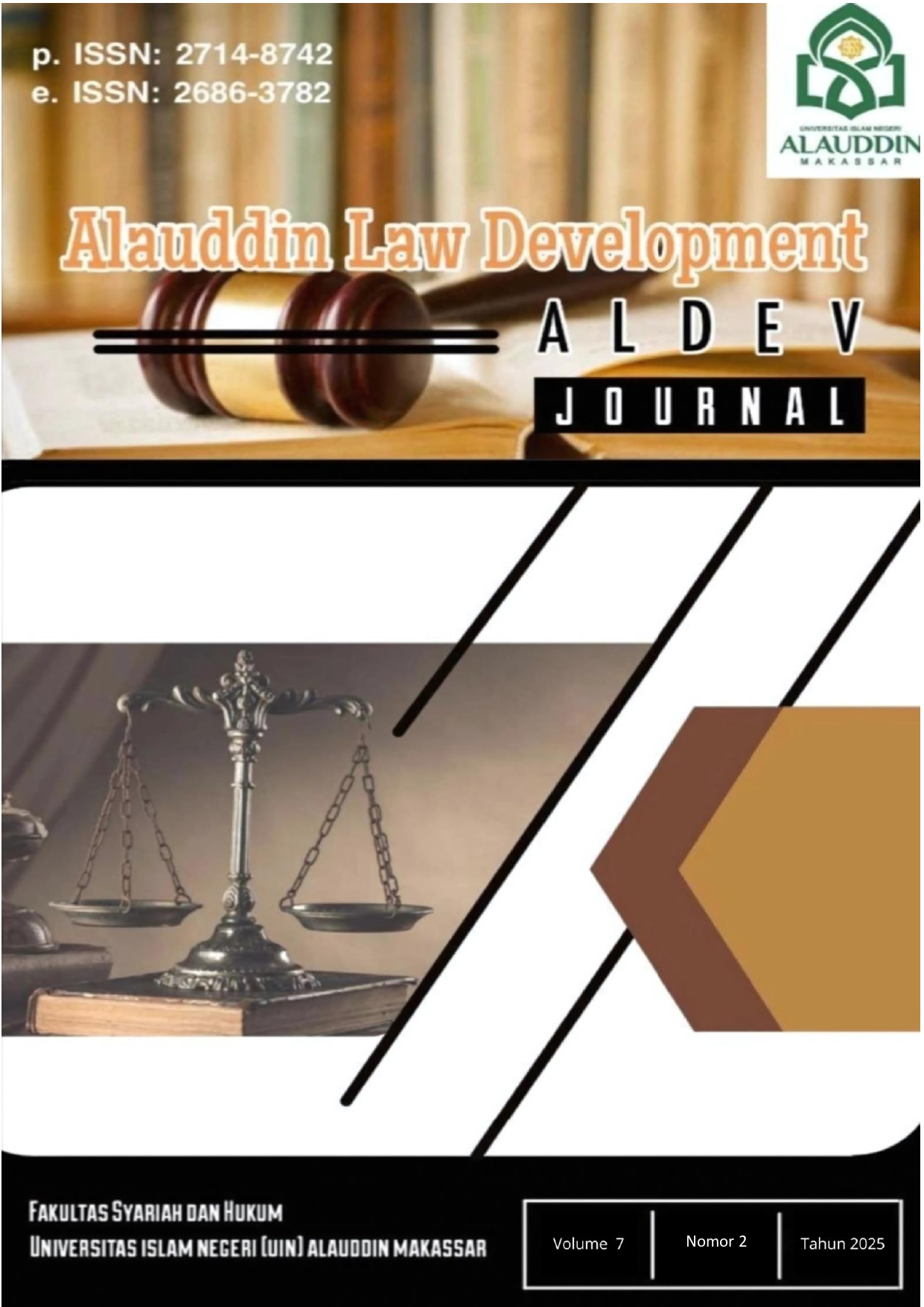Juridical Review of Smartphone Use While Driving in Indonesia
DOI:
https://doi.org/10.24252/aldev.v7i2.45433Keywords:
Concentration, smartphone, GPSAbstract
The aim of this research is to identify the elements of criminal acts and sanction threats associated with using smartphones while driving, as well as the underlying reasons. This study uses a case approach, which is a normative legal research method that builds legal arguments based on concrete cases. The research is a bibliographic study with a normative juridical qualitative method that refers to legal norms in statutory regulations. Using smartphones while driving violates Law No. 22 of 2009 concerning Road Traffic and Transportation, with a maximum fine of Rp. 750,000.00, which may be reduced in court. The main reasons are urgent calls from family or work and the need for GPS navigation. It is expected that the government will establish clearer guidelines for using GPS on smartphones to ensure driver safety and support jobs like online motorcycle taxis. Law enforcers should educate drivers about the penalties for violations.
References
Abdulkadir Muhammad, Hukum dan Penelitian Hukum (Bandung: Citra Aditya Bakti, 2004)
Andika Ramadhan, ‘Main HP, Pemotor di Makassar Tewas setelah Tabrak Mobil Parkir’, kumparanNEWS.com, 25 October 2022 https://kumparan.com/kumparannews/main-hp-pemotor-di-makassar-tewas-setelah-tabrak-mobil-parkir-1z7Ra8jTkQ9/full [accessed 2 May 2023]
Clifford Nass, ‘Multitasking Hampers Brain Function’, Stanford University Report, 2012
Daniel Kahneman, Thinking, Fast and Slow (New York: Farrar, Straus and Giroux, 2011)
Earl Miller, MIT Neuroscience Institute Research Report (Cambridge, MA: MIT, 2009)
Eko Sutriyanto, ‘Korlantas Polri Catat 94.617 Kecelakaan pada Januari–September 2022’, Kompas.com, 20 November 2022 https://nasional.kompas.com/read/2022/11/20/15200561/korlantas-polri-catat-94617-kecelakaan-pada-januari-september-2022 [accessed 9 January 2023]
Hendra Cipto, ‘Operasi Patuh 2022, Ada 3.219 Kendaraan di Kota Makassar Didata dan Ditegur’, Kompas.com, 27 June 2022 https://www.kompas.com/tag/Operasi-Patuh-2022 [accessed 9 January 2023]
Herdi Muhardi, ‘Ponsel Jadi Penyebab Terbesar Kecelakaan Lalu Lintas’, Liputan6.com, 22 February 2018 https://www.liputan6.com/otomotif/read/3308171/ponsel-jadi-penyebab-terbesar-kecelakaan-lalu-lintas [accessed 2 May 2023]
Intan Trivena Maria Daeng and others, ‘Penggunaan Smartphone dalam Menunjang Aktivitas Perkuliahan oleh Mahasiswa Fispol Unsrat Manado’, Acta Diurna, VI.1 (2017)
Iwan Kurniawan and others, ‘Implementasi Undang-undang Nomor 22 Tahun 2009 Tentang Lalu Lintas dan Angkutan Jalan (Studi Kasus di SMA Negeri 4 Kota Malang)’, Journal of Public Policy and Management Review, 2.2 (2013)
Larry D. Rosen and others, The Distracted Mind: Ancient Brains in a High-Tech World (Cambridge, MA: MIT Press, 2017)
Penjelasan Pasal 106 Ayat (1), Undang-Undang Republik Indonesia Nomor 22 Tahun 2009
Undang-Undang Republik Indonesia Nomor 22 Tahun 2009 tentang Lalu Lintas dan Angkutan Jalan
UU 22 Tahun 2009 tentang Lalu Lintas dan Angkutan Jalan’, Jogloabang, 8 September 2019 https://www.jogloabang.com/pustaka/uu-22-2009-lalu-lintas-angkutan-jalan [accessed 9 January 2023]
Downloads
Published
How to Cite
Issue
Section
License
Copyright (c) 2025 Andi Akbar Ramdhan Salampe, Erlina, Hamsir, Ade Darmawan Basri, Andi Safriani

This work is licensed under a Creative Commons Attribution-ShareAlike 4.0 International License.
All writings published in this journal are the authors' personal views and do not represent the views of this journal or the authors' affiliated institutions. Author(s) retain copyrights under the license of Creative Commons Attribution-ShareAlike 4.0 International (CC BY-SA 4.0).


